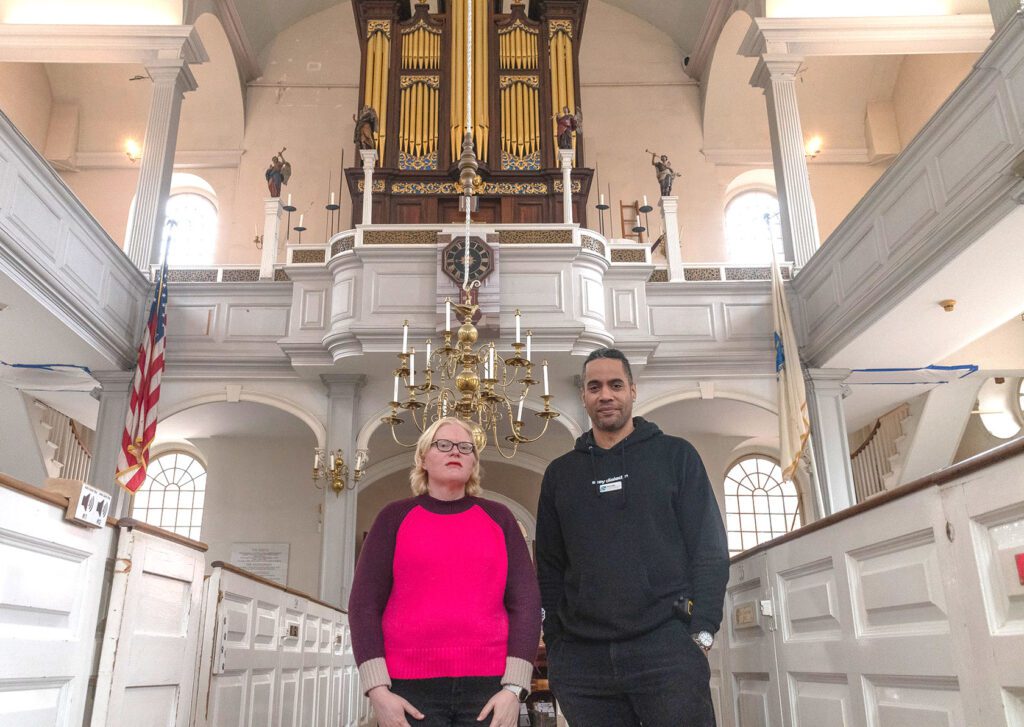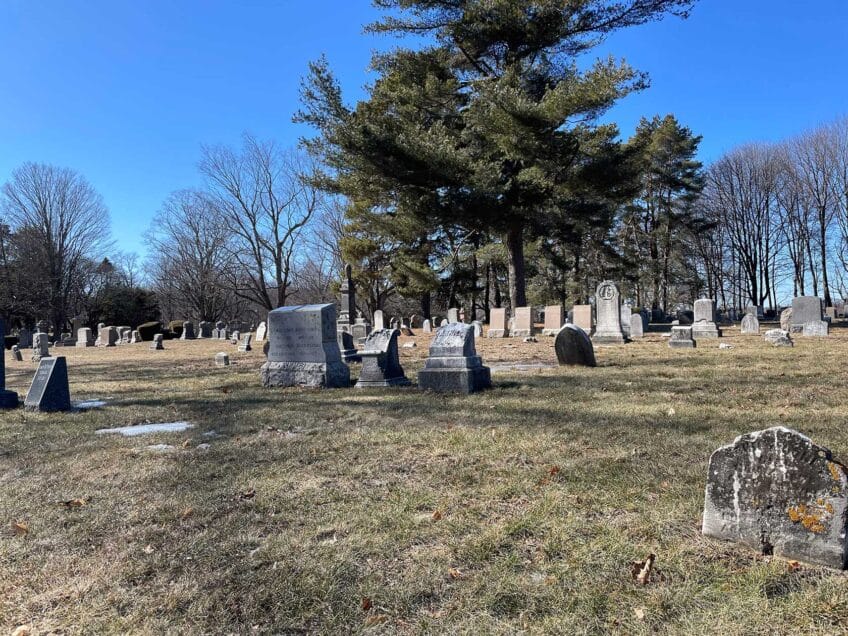
In the front left corner of the hushed sanctuary in Old North Church sits a box pew lined in plush red velvet, as it might have looked centuries ago. That pew was once reserved for the use of a group of traders who donated a cargo-load of valuable logwood that the church sold to fund the construction of the steeple where two lanterns set off Paul Revere’s ride.
That logwood that paid for the steeple was felled by slave labor.
For years, that pew, called the Bay Pew, served as the location in the church where guides might discuss the church’s connection with slavery and race. That story has now been spread across the whole floor of the church sanctuary, following new research and educational efforts to broaden the site’s historical legacy in honor of its 300-year anniversary last year.
“When people come, they learn more about the one moment [of Paul Revere’s ride] which is so important in U.S. history, but there have been so many important moments in Old North’s history, and we felt that it was important to ensure that African and Indigenous peoples were also part of that story,” said Jaimie Crumley, the research fellow who led the work.
Crumley’s research focused on the period between its first worship services in 1723 and the lead-up to the Civil War in 1861.
During that time, the North End landmark was open to white, Black and Indigenous congregants — the church’s first rector Timothy Cutler, an enslaver, eagerly tried to baptize Black and Indigenous people into the congregation — but the space was long segregated by race and class. Congregants of color were forced to sit in the north gallery, above the sanctuary floor, where clear sight lines to the front of the space could often be blocked.
Incorporating the history throughout the entire sanctuary space was a prominent goal for Old North Illuminated, the historical museum arm of the church, which also hosts an active congregation.
“We try to be very intentional about not saying, ‘Okay, we’re going to talk about Paul Revere and the lanterns in this space and then we’re going to talk about slavery over here,’” said Nikki Stewart, executive director of Old North Illuminated. “We’ve really tried to weave it all together so that no matter what you’re experiencing here, you understand both the signal lanterns and the connection to the revolution but also that slavery was common in the North.”
In the new exhibit, which was unveiled in August, informational placards about people like Mary Crankey, a free Black woman who was part of three generations of Black congregants documented in church records, sit alongside signs telling the story of people like Newark Jackson, who worked as a captain, merchant and shop owner and owned and traded slaves.
In one pew, a sign tells the story of Elizabeth Humphries, a free Black woman whose eight children were baptized at Old North Church, while another identifies Alexander Chamberlain, a white church member who indentured three of Humphries children when their father died.
Crumley, who now works as an assistant professor of ethnic studies and gender studies at the University of Utah, said the history of non-white groups is often siloed out from the rest of the story in U.S. history.
“Part of what we’re trying to do at Old North as a public history site [is] to break away from that and to show that our stories are actually really integrated,” she said. “The white colonists could not have done what they did without Indigenous peoples both collaborating with them and also resisting them. It’s the same thing with the stories of African people.”
The new information has been well-received by visitors, many of whom aren’t expecting the breadth of stories when they arrive at the church through the narrow streets and colonial brick architecture of the North End.
“The general tourist who’s on the Freedom Trail, from other parts of the country, is drawn because of the lanterns, the rest is like a welcome surprise, like, ‘Wow, we didn’t know all this happened,’” said Julius James, visitor experience manager at the Old North Church & Historic Site.
Kim Burke, a Michigan resident who visited the church Feb. 23, said going in she didn’t know if the church would discuss its history with communities of color but liked seeing the history included. She said she was interested to learn how the church both welcomed and separated members of color.
James said the church has seen some visitation from people specifically seeking out the exhibit while other stumble onto the new exhibit while following the Freedom Trail, but he hopes to see more visitation from communities of color, especially locally in the Boston area.
He encouraged local residents to come, even if they might be turned off by the neighborhood’s touristy reputation.
“The stories of the free and the slave folks here are just like the real stories that took place here in Boston in this place in this neighborhood,” James said. “People should just come and visit.”
The work done by Old North Illuminated comes as churches and other groups across the city and the region research and grapple with their ties to slavery. In 2023, the First Church of Roxbury released a report detailing its history with slavery and people of color from its founding to the American Revolution. A report released last month by the community group Hidden Jamaica Plain investigated the neighborhood’s ties to enslavement, including connections to local churches like the First Church of Jamaica Plain.
Crumley said that as churches and organizations examine and confront this history, it provides an opportunity to inform discussions both around financial reparations but also around general questions of equity, and how to learn from the past to move forward.
“What does it mean really to create equity in light of these histories?” she asked. “What does it look like for us also to create more inclusive futures?”






